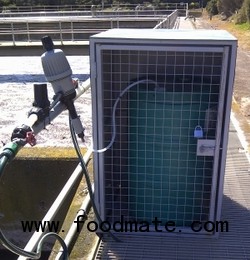 Organic catalysts are highly concentrated, with a completely non-toxic liquid formulation, and are either injected directly into wastewater streams or deployed through spray or fogging systems.
Organic catalysts are highly concentrated, with a completely non-toxic liquid formulation, and are either injected directly into wastewater streams or deployed through spray or fogging systems.They are complementary to virtually all microbiological systems and chemical purification processes, and contribute to the enhancement of these operations.
Able to work in conjunction with oxidizing agents, organic catalysts can substantially reduce the amount of oxidizing agents needed to perform purification requirements, and aid in improving removal of bio-films, which is critical to eliminating pathogen growth and the fouling of filters and membranes.
Delivery systems
Metering pumps: Generally the injection of organic catalysts, with a metering pump, directly into the wastewater stream, is recommended. Dosage rates are based both upon the flow volumes and organic contaminate (BOD) loading level. For elimination of FOG clogging, organic catalysts can be injected into sewers at wet wells or other access points.
Injection system: Reduction of ammonia VOCs or wastewater discharges can be substantially improved through injection of organic catalyst into waste stream or sludge transport system.
Air diffusion systems: To enhance aeration processing, injection of organic catalyst is made directly into an air diffusion system, at a dosage rate calculated by the flow rate or rate required to meet on going performance levels. Increased dissolved oxygen levels have been known to be possible through increasing the dosage rates of organic catalyst.





